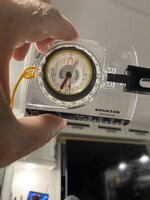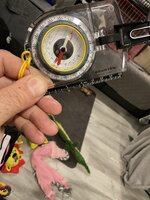for anyone interesting in geeking out a bit on the subject, here's a bit of a comparison.
this is the same route track in google earth pro, rideWithGPS route planner, and overlaid with local municipal contour data, which has some interpolation but it is generally very accurate, plus or minus a foot or two. i've compared this data set extensively to proper surveys and have never found it to be off by more than a foot or two, and typically in areas with odd topography.
the city data shows a total rise of 246 feet over .9 miles. google earth pro is at 222 feet; not too bad, 10% less. the RwGPS route planned thinks it's only a 207 foot gain, which is starting to get unacceptably far off, IMO, given that this is in the middle of a well surveyed urban area with pretty high resolution DEM models and many other sources available.
looking at the slope data though, we find that the actual (or as close as we're going to know without surveying it!) maximum sustained slope over a 5' rise is 8.5%. RwGPS thinks it's only 6.9%. could be averaging over a larger distance, could just be wrong. google earth pro, however, is interpolating the steps in the DEM model quite poorly indeed, with readings as high as 18%. zooming in enough on the cross section track shows that it's stairstepped, with alternating flat spots and very steep spots.
strava is generally in agreement in this case with the muni data. i've seen others where it's way off.
here's the amazing part which i referred to earlier. at slow speeds, drag is not a factor. if it's not windy, the relationship between power, speed, and grade is extremely consistent. bikecalc predicts that my 229 watts of leg power, averaged over 100 feet of ground or so (6.9% slope) should yield 6.99 mph. actual recorded speed? 7mph. i know that if i look down at my bars and see "230w" and "6mph" that it's around 8%. 5mph is 10%. 4mph is 13%. slower than 4mph and i've turned around.
 View attachment 147031
View attachment 147031


